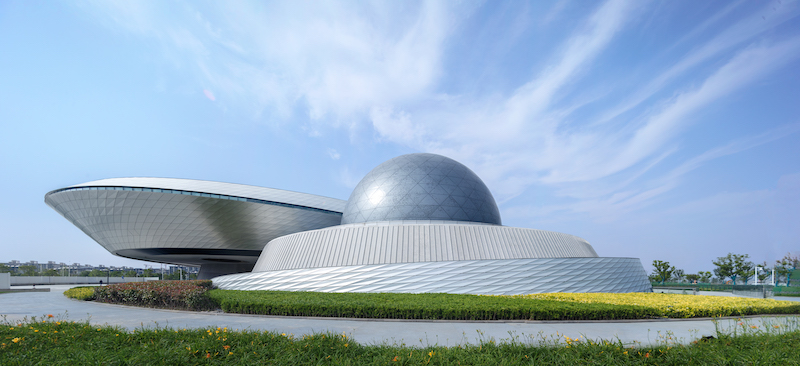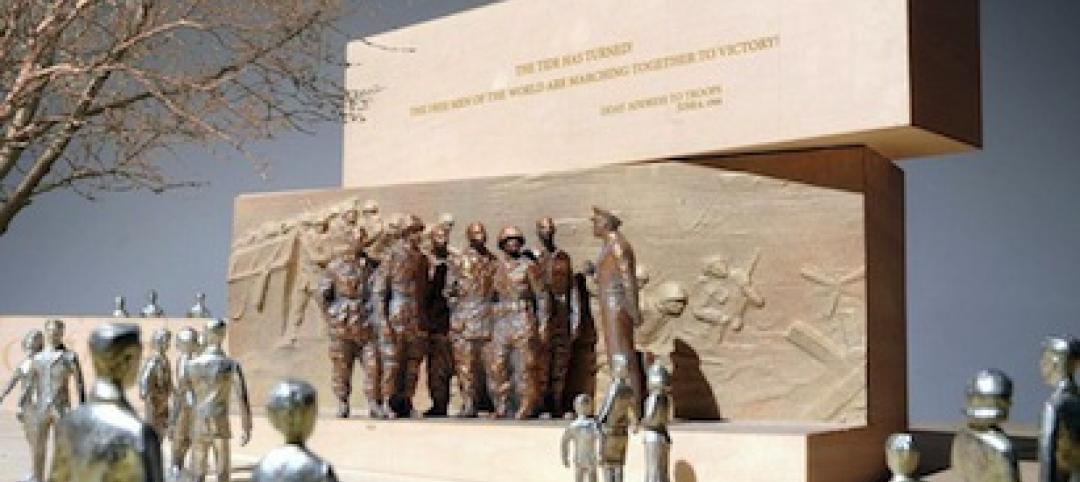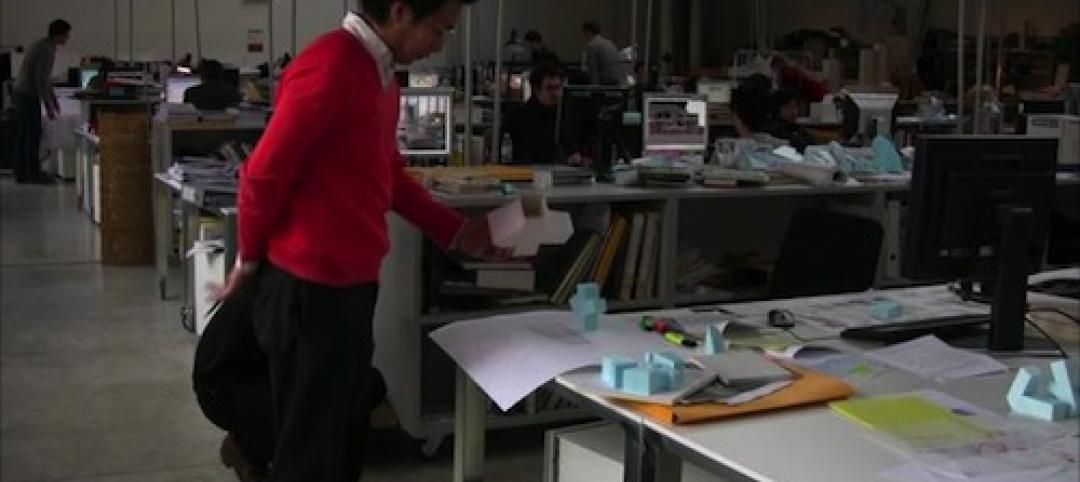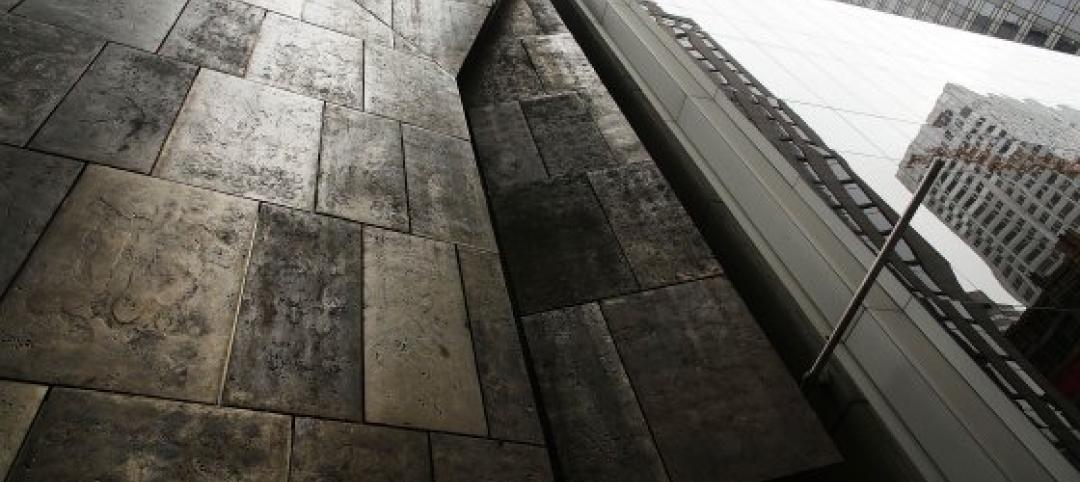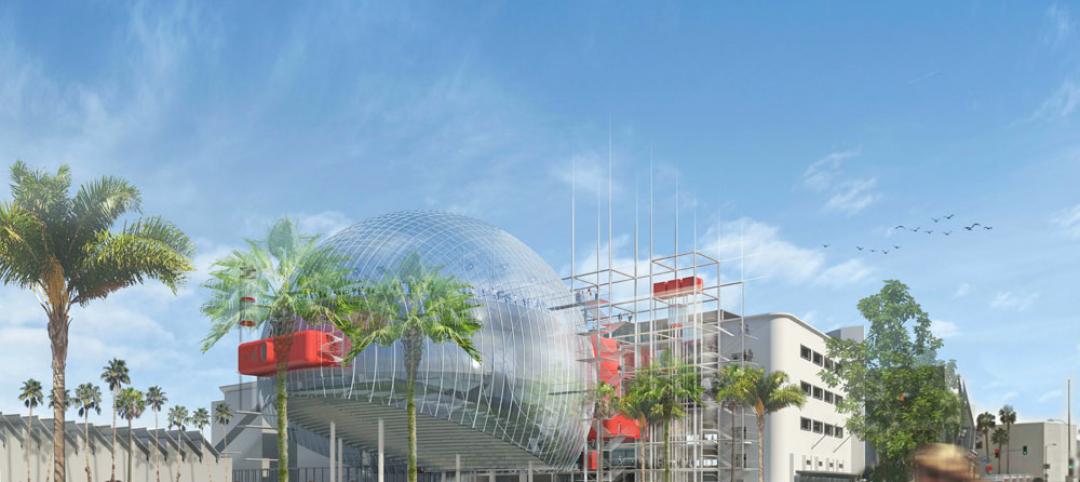The recently completed 420,000-sf Shanghai Astronomy Museum is set to open on July 18. The new astronomical branch of the Shanghai Science and Technology Museum is the largest museum in the world solely dedicated to the study of astronomy.
The building does not include any straight lines or right angles as a nod to the geometry of the universe and the dynamic energy of celestial movement. Design inspiration was drawn from the “three-body problem” in physics, which looks to the intricate choreographies created by gravitational attraction of multiple bodies within solar systems.
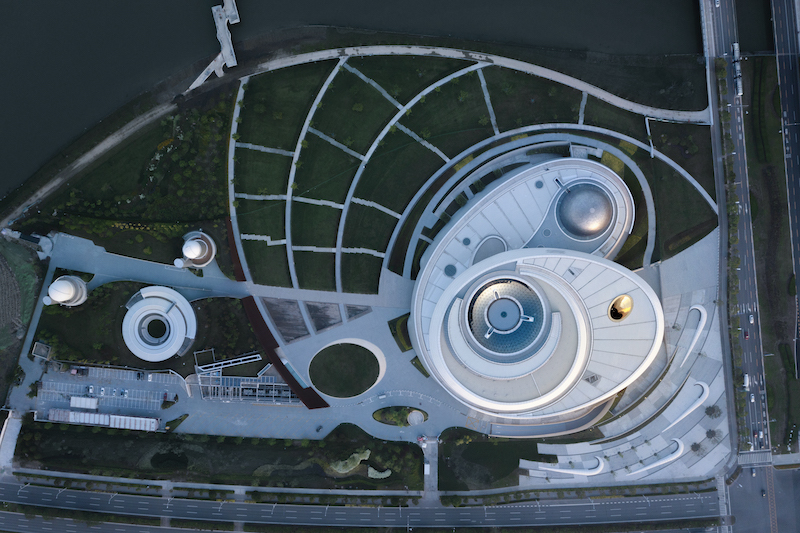
The building’s envelope traces a series of arcing paths that are influenced by gravitational pull: the heart of the central atrium, the forward momentum at the entry, and the planet-like sphere that envelopes the planetarium theater. Additionally, the museum’s three principal architectural components, the Oculus, the Inverted Dome, and the Sphere, act as functioning astronomical instruments that track the sun, moon, and stars.
The Oculus is suspended over the museum’s main entry and demonstrates the passage of time by tracking a circle of sunlight on the ground across the entry plaza and reflecting pool. The Sphere houses the planetarium theater, which is half submerged in the building. The Sphere derives its shape from the programmatic element it contains, but also from an abstract manifestation of a primary celestial form. With minimal visible support, the Sphere evokes an illusion of weightlessness and anti-gravity. The Inverted Dome is a large, inverted glass tension structure that sits on top of the central atrium at the roof line. Visitors will have the ability to occupy the center of the glass dish with an unimpeded view of the sky. The Inverted Dome acts as the culmination of the exhibit journey. A 720-degree spiraling ramp inside the museum and underneath the Inverted Dome traces the orbital flow of the visitor sequence throughout the museum exhibits and draws the eye upward to its apex.
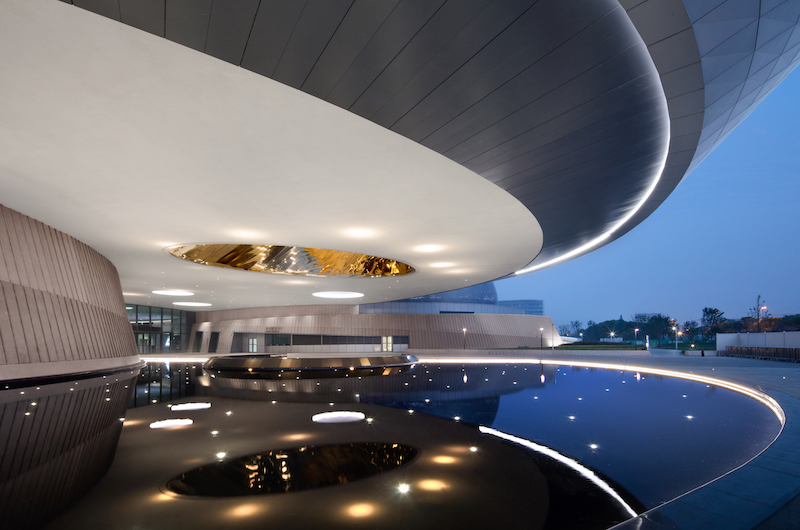
The museum grounds include buildings and programming such as temporary and permanent exhibits, a 78-foot solar telescope, an observatory, an optical Planetarium, an Education and Research Center, and a Digital Sky Theater. Programming at the museum will feature immersive environments, artifacts and instruments of space exploration, and educational exhibits.
A ceremony to celebrate the museum’s opening will be held on July 17.
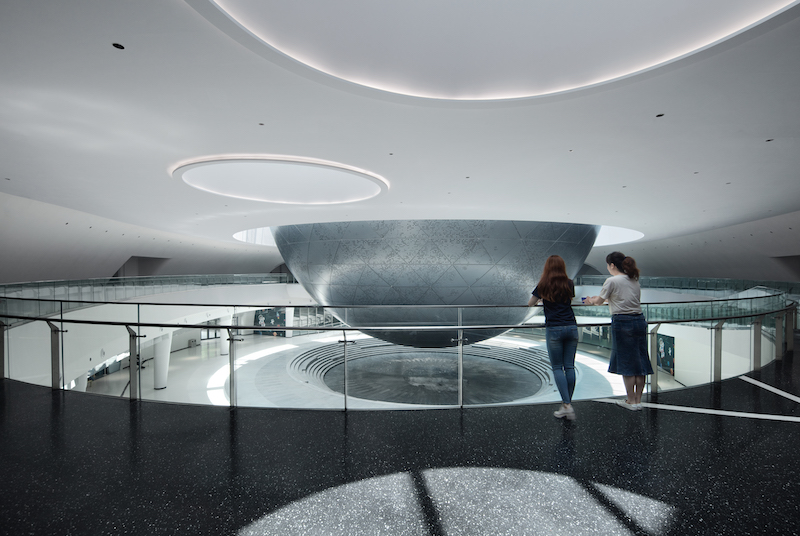
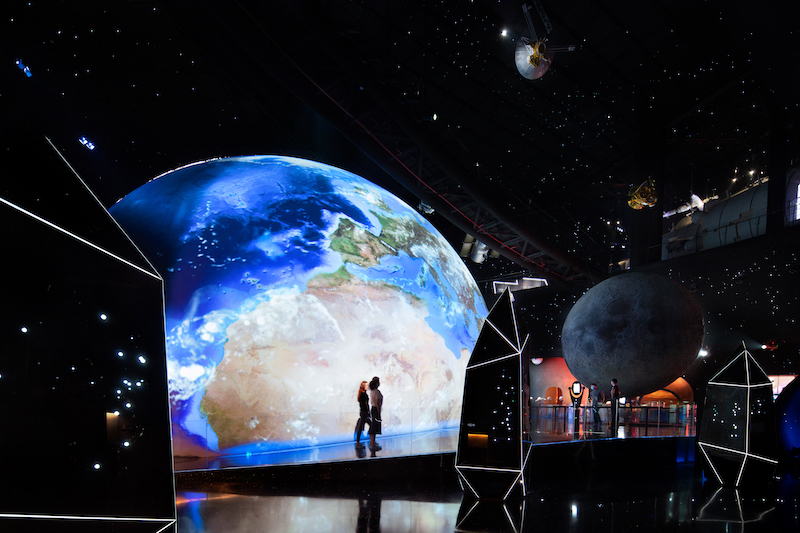
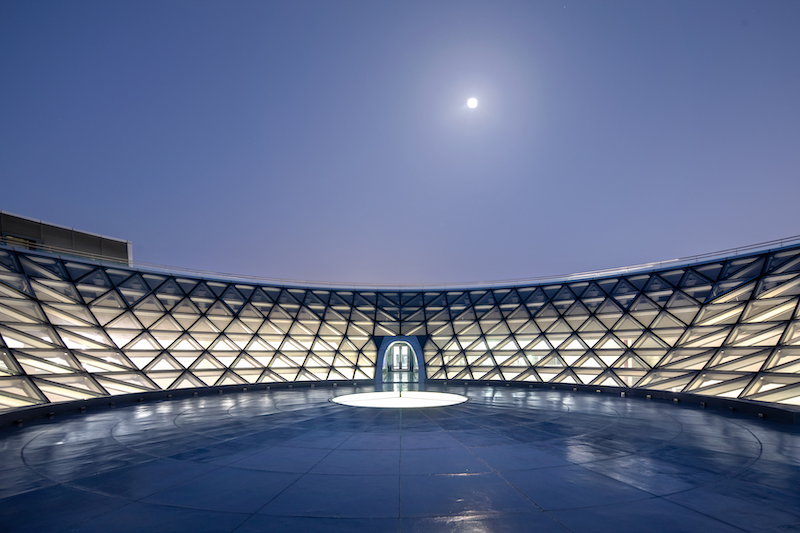
Related Stories
| Jun 25, 2013
DC commission approves Gehry's redesign for Eisenhower memorial
Frank Gehry's updated for a new Dwight D. Eisenhower memorial in Washington, D.C., has been approved by the Eisenhower Memorial Commission, reports the Washington Post. The commission voted unanimously to approve the $110 million project, which has been gestating for 14 years.
| Jun 5, 2013
USGBC: Free LEED certification for projects in new markets
In an effort to accelerate sustainable development around the world, the U.S. Green Building Council is offering free LEED certification to the first projects to certify in the 112 countries where LEED has yet to take root.
| Jun 3, 2013
Construction spending inches upward in April
The U.S. Census Bureau of the Department of Commerce announced today that construction spending during April 2013 was estimated at a seasonally adjusted annual rate of $860.8 billion, 0.4 percent above the revised March estimate of $857.7 billion.
| May 21, 2013
7 tile trends for 2013: Touch-sensitive glazes, metallic tones among top styles
Tile of Spain consultant and ceramic tile expert Ryan Fasan presented his "What's Trending in Tile" roundup at the Coverings 2013 show in Atlanta earlier this month. Here's an overview of Fasan's emerging tile trends for 2013.
| May 2, 2013
First look: UC-Davis art museum by SO-IL and Bohlin Cywinski Jackson
The University of California, Davis has selected emerging New York-based practice SO-IL to design a new campus’ art museum, which is envisioned to be a “regional center of experimentation, participation and learning.”
| Apr 30, 2013
Tips for designing with fire rated glass - AIA/CES course
Kate Steel of Steel Consulting Services offers tips and advice for choosing the correct code-compliant glazing product for every fire-rated application. This BD+C University class is worth 1.0 AIA LU/HSW.
| Apr 26, 2013
Documentary shows 'starchitects' competing for museum project
"The Competition," a new documentary produced by Angel Borrego Cuberto of Madrid, focuses on the efforts of five 'starchitects' to capture the design contract for the new National Museum of Art of Andorra: a small country in the Pyrenees between Spain and France.
| Apr 24, 2013
Los Angeles may add cool roofs to its building code
Los Angeles Mayor Antonio Villaraigosa wants cool roofs added to the city’s building code. He is also asking the Department of Water and Power (LADWP) to create incentives that make it financially attractive for homeowners to install cool roofs.
| Apr 23, 2013
Architects to MoMA: Don't destroy Williams/Tsien project
Richard Meier, Thom Mayne, Steven Holl, Hugh Hardy and Robert A.M. Stern are among the prominent architects who on Monday called for the Museum of Modern Art to reconsider its decision to demolish the former home of the American Folk Art Museum.
| Apr 17, 2013
First look: Renzo Piano's glass-domed motion pictures museum
The Academy of Motion Picture Arts and Sciences last week released preliminary plans for its $300 million Academy of Motion Picture Arts and Sciences museum in Los Angeles, designed by Renzo Piano and local architect Zoltan Pali.


